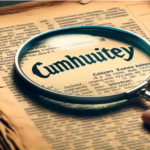Have you ever stood before a group, ready to give a presentation, and suddenly your mind went blank? It’s a common fear—forgetting what you want to say when all eyes are on you.
This is exactly why memorizing your presentation can be a game-changer. In this blog post, we will share some effective strategies to help turn that fear into confidence. From mnemonic techniques to the power of rehearsal before bedtime, we’ve got you covered.
The Importance of Memorizing a Presentation
Knowing your presentation by heart helps a lot. It boosts your confidence and makes your talk flow smoothly.
Knowing the material
Mastering a presentation by heart is key. This means you should be able to say it backward if needed. Knowing your material inside out lets you move smoothly between parts of your speech.
If something doesn’t go as planned, you can adjust without stumbling. Once, Sabina forgot the second verse of a poem in a college contest because she hadn’t learned it well enough.
This shows how crucial memorization is.
Relying too much on PowerPoint slides can make speaking harder and limit your interaction with the audience. When you know your content well, you don’t need slides to continue. This skill boosts your confidence and helps keep everyone interested in what you’re saying.
Building confidence
Knowing what you will talk about boosts confidence. If you can deliver your presentation well, you will feel more sure of yourself. This is key in public speaking. A strong start grabs your audience and helps you stay confident.
Research shows that many adults and college students are scared of public speaking. But learning to present well can make people notice your skills and knowledge.
Getting better at speaking and showing a good stage presence also increases confidence. The crowd sees you as capable and interesting, which means they are more likely to listen to what you have to say.
So, working on these things helps make presenting less scary and helps other people see how good you are at what you do.
Improving delivery
Knowing your material well can boost your confidence, which in turn leads to the next goal: improving your delivery. Professional presenters often perform without slides, relying on their memory and oral communication skills.
This shows how important it is to focus on how you give your presentation, not just what’s in it. By figuring out who your audience is, you can better shape your delivery to meet their needs.
Using mnemonic imagery and password lists can make a big difference in speech delivery. These cognitive strategies help by creating vivid images in your mind linked to the information you need to remember.
This makes it easier for you to recall facts during a presentation without looking at notes or slides. Practicing these techniques until they’re second nature means that, come presentation time, you’ll be able to focus more on connecting with your audience rather than worrying about forgetting parts of your speech.
Effective Ways to Memorize a Presentation
Memorizing a presentation can make it much better. Here’s how you can do it in easy steps.
Use mnemonic techniques
Mnemonic techniques can turn the tough task of memorization into a simpler one. Think about creating a memory palace with the Method of Loci, where you link ideas to locations. This trick helps your brain grasp details by placing them in a familiar space.
Joshua Foer thoroughly explores this strategy in his book Moonwalking with Einstein: The Art and Science of Remembering Everything. Adding songs, poems, rhymes, outlines, images, and acronyms makes the content stickier in your mind.
Other mnemonic devices include baroque music at 60 beats per minute to boost retention. Dr. Georgi Lozanov’s research supports this technique for enhancing memory during study sessions.
Integrating these methods into your preparation routine can improve how well you remember your presentation material.
Break down information
To memorize a presentation effectively, start by crafting your script carefully. Organize it into natural sections. This method makes it easier to tackle the material piece by piece rather than all at once.
Think about how you can divide your content in a way that flows logically.
After splitting your presentation into these smaller chunks, focus on learning each section, paying special attention to transitions between them. These breaks and connections will help your brain lock in the details more firmly.
Practicing these sections over time allows for better memory retention and recall during delivery. Plus, always have a backup plan for moments of forgetfulness; knowing what to do if you lose your place can save the day.
Prioritizing parts of your speech also means you focus on the most important points first, ensuring they stand out in your memory.
Record yourself and practice
After breaking down the information, it’s time to move on to recording yourself. This method boosts your memorization and confidence. Make a video or audio of your presentation. Watch or listen to see how you sound and look.
It helps fix mistakes in what you say and your body language.
Rehearse out loud 5–6 times for better results. Try practicing before bedtime, too. This trick helps your brain retain information while you sleep. For more rehearsal, use the 20-20-20 rule: study for 20 minutes, take a short break, and then do it twice more.
Also, taking a nap after rehearsing can sharpen your memory and thinking skills.
Create visual slides for easy recall
Making visual slides helps a lot with remembering your presentation. You start by using mind maps to see how ideas link together. Add main points, then branch out to smaller ones. Throw in some pictures and colors too.
This method makes it easy to see the big picture and remember details without getting lost.
Sketching can also boost memory. Draw diagrams or fun images that relate to your topic. The sillier and more creative these connections are, the better they will stick in your mind.
If drawing isn’t your thing, no worries! Check out PopAi to create an AI PowerPoint presentation and get more ideas on creating visuals that make information easy to grasp.

Conclusion
Are you ready to ace your next presentation? Great! Keeping every part in mind can be simple. Break it down, use tricks like mind maps or memory palaces, and practice a lot. Why not try drawing or recording what you need to learn? It’ll stick better. Think about the impact when you deliver with confidence—no notes needed! You’ve got this; go give that talk and wow them all.




















